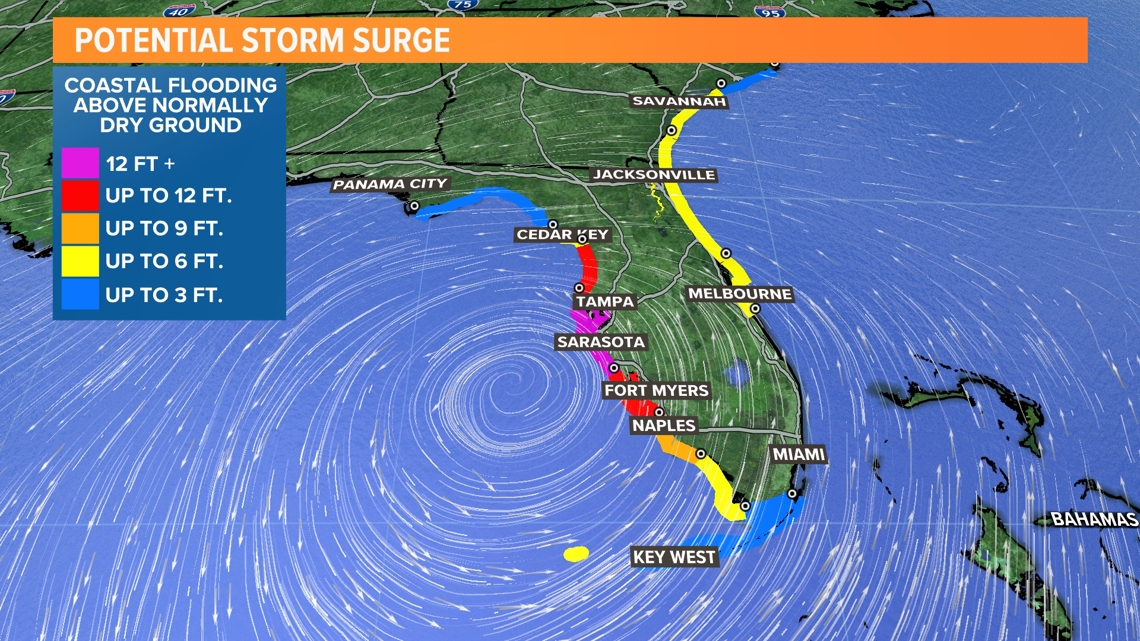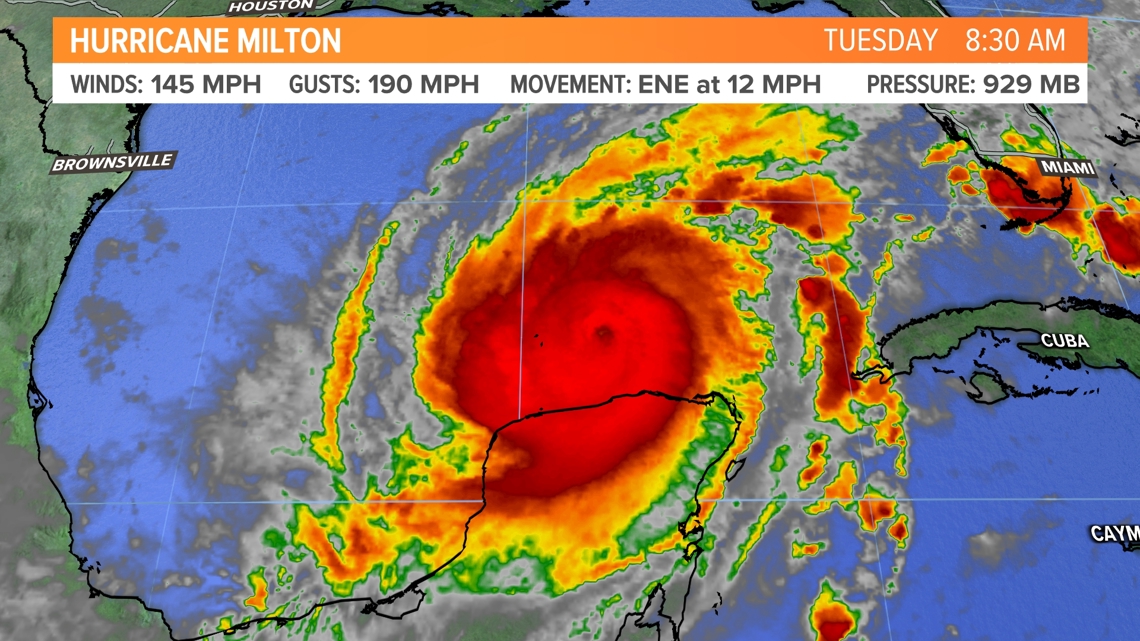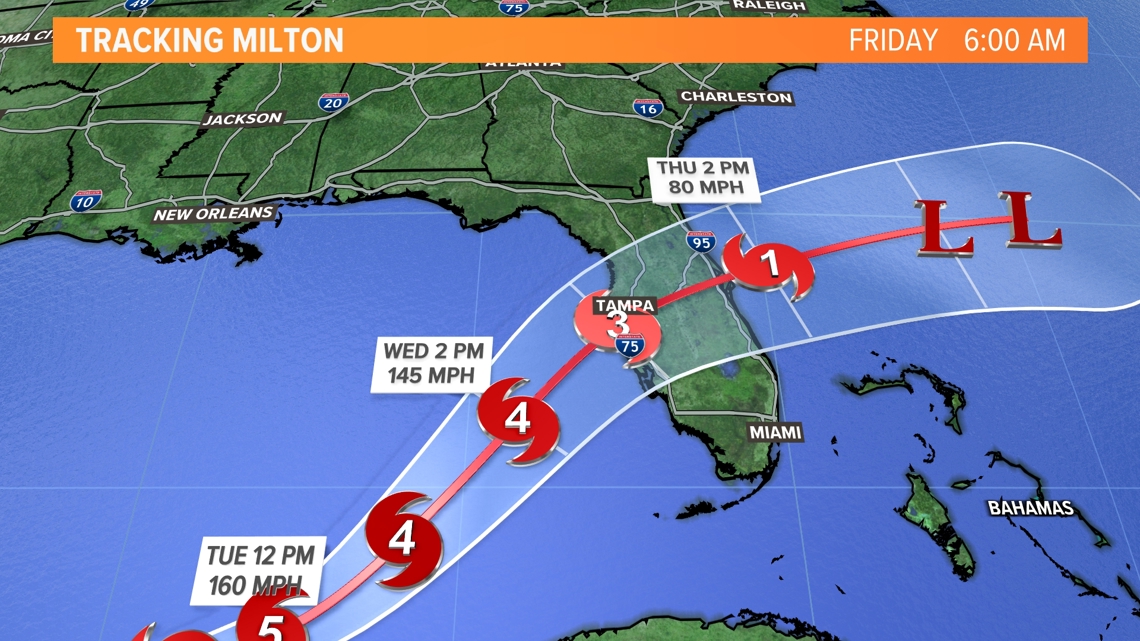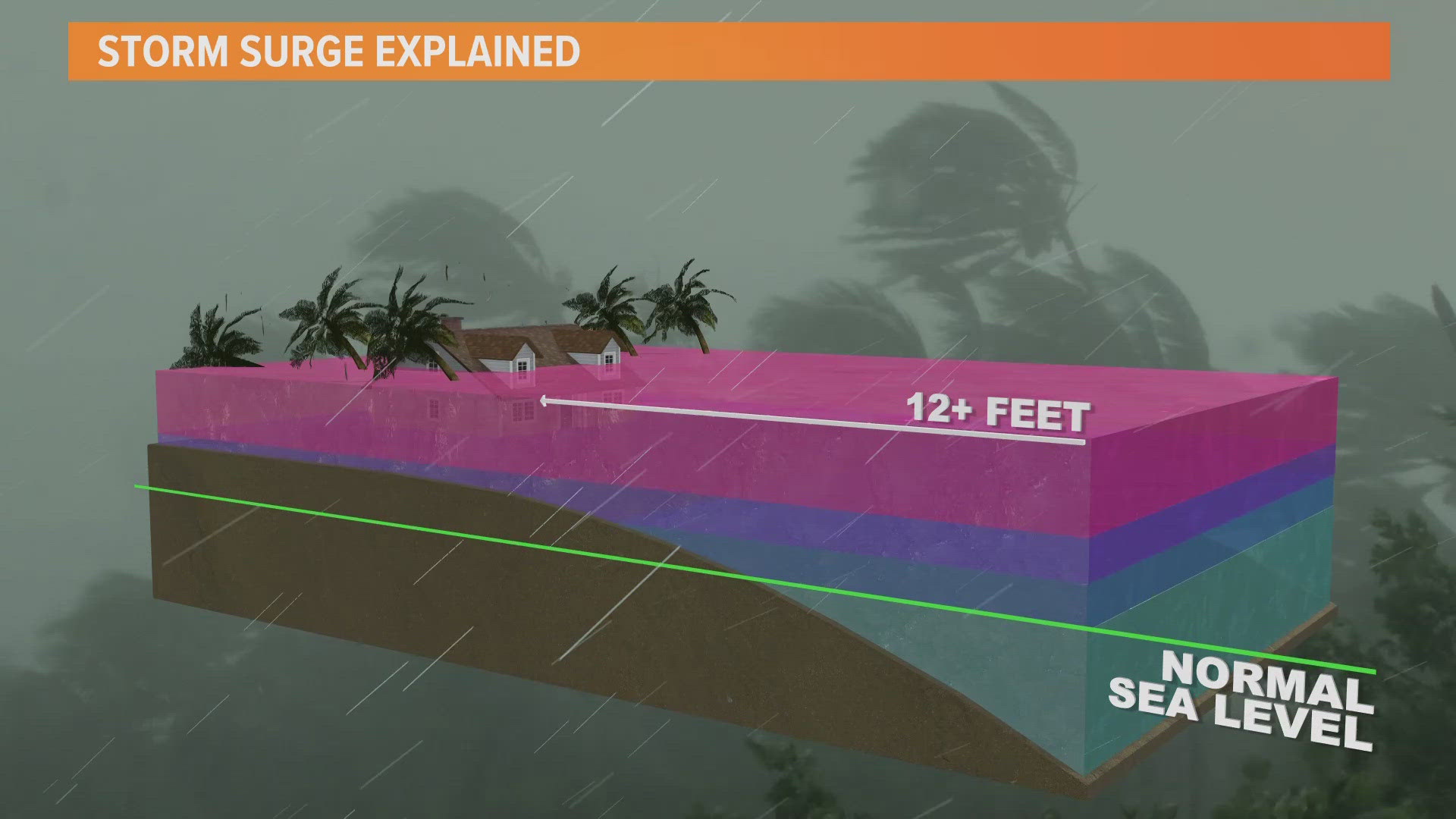PORTLAND, Maine — Historically, storm surge has been the leading cause of fatalities associated with hurricanes.
Visions of homes submerged to their rooftops and residents navigating flooded streets in canoes come to mind.
But how does such an overwhelming amount of water reach land? It is not primarily due to heavy rainfall.
Storm surge is primarily caused by strong winds that push water onto the shore.


Those sustained wind speeds, which may exceed 150 miles per hour, will push ocean water onto land, significantly elevating the normal sea level.
Current forecasts indicate that these winds could drive over 12 feet of water ashore in the coming days.


Areas such as Tampa, Sarasota, and Fort Myers are expected to be the most heavily affected, while the remainder of Florida’s western and southern coastline will also experience the most significant storm surge.


Hurricane Milton is intensifying in the Gulf of Mexico, complicating recovery efforts from Hurricane Helene, which occurred just about two weeks ago.


Unfortunately, the west coast of Florida is also in the projected path of Milton.
The hurricane is expected to make landfall Wednesday evening as a Category 3 (or potentially Cat4) storm, compounding the damage already present.


Here’s a little good news: some wind shear in the tropics should help weaken the hurricane before it makes landfall.

